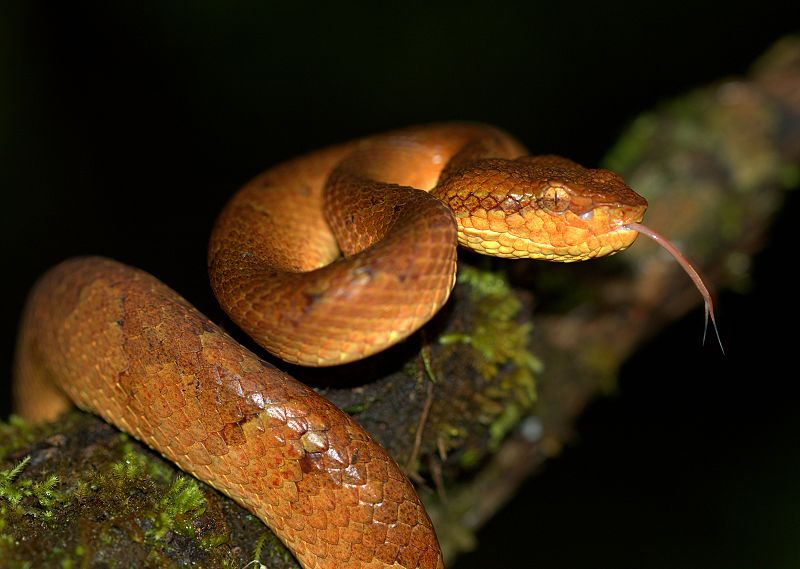Malabar Pit Viper-A Master of Camouflage
Malabar pit vipers are a fascinating species. For one, they are endemic to the Western Ghats, which means they aren’t found anywhere else on the planet. Secondly, the young develop inside the mother’s body and are born live, unlike most reptiles that hatch from eggs. This way of reproduction is called viviparity; it is also the reason this order of snakes is called vipers. But the most intriguing characteristic of Malabar pit vipers is their colour morphology, or their ability to change colour over the course of their life.
A number of species exhibit this ability. For instance, chameleons and cuttlefish can change their colours and patterns within a matter of seconds, and use this ability to confuse predators and blend into their surroundings. These changes are rapid and reversible. Species like dragonflies and deer deepen in colour around breeding season, presumably to attract a mate. These changes are more gradual. Others like the west African frog, develop colour when they attain sexual maturity, an indicator that they are ready to mate.
These vipers live in thick forests, mainly on the trees. Its coloring means that it is well camouflaged against the green leaves. It lies in wait for its prey and then kills it with a quick bite. Once the prey has been caught, the snake must hold tight to stop it from falling out of the tree.
This is Malabar Pit Viper (Trimeresurus malabaricus). This particular Pit Viper is a pale green snake with faint, uneven dark green/brown blotches on the back. But there is tremendous variation in their coloration, as we saw a similar pit viper just a few meters away which was much darker with brown/black color. The head is wide and triangular, set on a thin delicate neck. Pit Viper is a slow-moving snake and nocturnal. They rely on camouflage for protection. Although slow to defend themselves, they are capable of fast strikes and bites if disturbed. The food of this snake consist of small mammals like rodents, lizards, birds and frogs.

Among the many things we don’t know about the Malabar pit viper is its life span. Gerry estimates it’s about 14-15 years, but it’s hard to say without a study. This makes it hard to establish a link between age and colour morphology. We don’t know if the colour changes are permanent or whether they change seasonally, or every few years. Most significantly, we do not know what prompts this alteration. What makes a brown-beige juvenile morph into a pale blue snake with deep coral markings along its body?

One theory is that the colouration is a form of camouflage. This makes sense when one considers the behaviour pattern of the Malabar pit viper. They are known to have a small home range, and spend their days coiled up around a branch, or sunning on a rock. At night they hunt prey such as rodents and smaller reptiles. Within their micro-habitat, like the kind of laterite rock found in Goa, a yellow or crimson snake would be nearly indistinguishable from its background.
Some researchers believe that the Malabar Pit Viper’s morph is a good indicator of its habitat. Most large MPV females are green with chocolatey mottled colours. When viewed from above, these colours break the form of the animal, making it very difficult to distinguish them from a branch covered with moss or lichen.
 |
The patterns and colours are meant to confuse predators. Since Malabar pit vipers look so diverse, natural predators like cobras and monitor lizards might find it harder to identify their meal of choice.
 |
| Blue Malabar Pit Viper |

Comments
Post a Comment